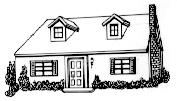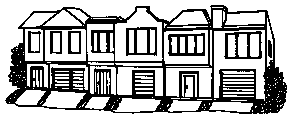One Story

Split Level

1 1/2 Story

Bi-Level

Select the type of residence from the following choices:
These structures are detached, single-family residences designed for one-family ownership or occupancy. They are built in many architectural styles or mixtures of styles and are called by various names depending on the region where the home is constructed (e.g., cape cod, colonial, ranch, contemporary, modern, rustic, etc.).
Examples:
|
One Story
|
Split Level
|
|
1 1/2 Story
|
Bi-Level
|
A multiple residence is a multi-family dwelling designed for permanent or semi-permanent habitation (as opposed to transient occupancy). Such structures are three stories or less and of lightweight residential type construction. Each unit has a kitchen and at least one bath.
Generally, the units are intended for rental purposes, but may be individually sold as condominiums. Condominium development is considered a type of ownership and should be priced according to design, quality and type of occupancy. Additional items related to condominium development not included in the costs are legal fees, temporary operation of homeowners association and marketing.
You cannot use this type for high-rise apartments (over three stories). Use the High Rise Apartment occupancy in the Commercial Estimator program for such structures.

Town houses are single-family, attached residences also referred to as row houses. Each town house living unit is one of a group of two or more units that are adjoined by common walls. There are two styles of town houses:
End Unit, a unit at the end of the row.
Inside Unit, a unit in the middle of a row.
Town houses differ from low-rise multiples in the following ways:
Town houses never have other units above or below.
Town houses always have individual exterior entries.
Town houses do not have more than two walls that are common with adjacent units.
A duplex is a pair of dwellings joined at the center by a common wall or with one above the other, but otherwise unattached to adjacent dwellings. Such structures are designed for two-family ownership or occupancy.